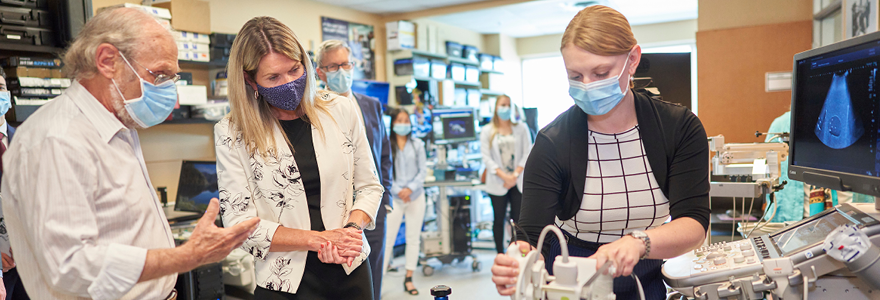Funding: Ontario Research Fund backs research in multi-modality imaging and precision medicine

Aaron Fenster, PhD, Professor of Medical Biophysics and Scientist at the Robarts Research Institute, has received support from the Ontario Research Fund Research Excellence grant for his research into precision imaging medicine.
The Ontario Research Fund is contributing $2,653,002 to his project, which will develop new imaging-based systems by combining existing ultrasound and radionuclide imaging technology to address three distinct but unmet clinical needs.
In recent years, the shift toward precision and personalized medicine necessitates imaging devices and systems that can be customized for specific organs or diseases, and provide preventative or predictive diagnostic capability.
Through combining multiple modalities of imaging, Fenster hopes to transcend the limitations associated with using single imaging modalities to improve the efficacy and diagnostic capabilities for organs and diseases.
One of the research objectives is to develop an imaging system to detect and guide breast cancer biopsies, technology that is being developed in partnership with Radialis Medical, a Canadian company specializing in precision imaging technology.
“This project makes use of positron emission mammography to identify the suspected tumour in the breast. Our technology, developed at Robarts Research Institute, is then used to perform the biopsy. This is a robotic-guided ultrasound system, which guides the biopsy needle to the target,” Fenster explained.
Other imaging systems that will be developed as part of this research will enable prostate cancer biopsy without requiring MRI, in collaboration with partner company Hydridyne Health, and custom fabrications of patient-specific pessaries in cases of uterine prolapse, in partnership with COSM Medical.
“The ORF grant will allow us to work closely with the companies to develop the imaging technology and translate the innovations into clinical use. The companies will be the vehicles through which the technology can be made available globally,” Fenster said.








